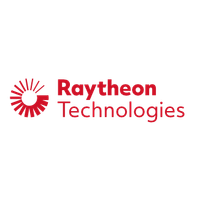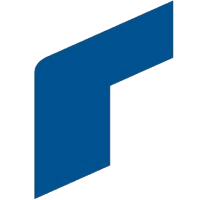
Raytheon Technologies Corp
NYSE:RTX


| US |

|
Johnson & Johnson
NYSE:JNJ
|
Pharmaceuticals
|
| US |

|
Berkshire Hathaway Inc
NYSE:BRK.A
|
Financial Services
|
| US |

|
Bank of America Corp
NYSE:BAC
|
Banking
|
| US |

|
Mastercard Inc
NYSE:MA
|
Technology
|
| US |

|
UnitedHealth Group Inc
NYSE:UNH
|
Health Care
|
| US |

|
Exxon Mobil Corp
NYSE:XOM
|
Energy
|
| US |

|
Pfizer Inc
NYSE:PFE
|
Pharmaceuticals
|
| US |

|
Palantir Technologies Inc
NYSE:PLTR
|
Technology
|
| US |

|
Nike Inc
NYSE:NKE
|
Textiles, Apparel & Luxury Goods
|
| US |

|
Visa Inc
NYSE:V
|
Technology
|
| CN |

|
Alibaba Group Holding Ltd
NYSE:BABA
|
Retail
|
| US |

|
JPMorgan Chase & Co
NYSE:JPM
|
Banking
|
| US |

|
Coca-Cola Co
NYSE:KO
|
Beverages
|
| US |

|
Walmart Inc
NYSE:WMT
|
Retail
|
| US |

|
Verizon Communications Inc
NYSE:VZ
|
Telecommunication
|
| US |

|
Chevron Corp
NYSE:CVX
|
Energy
|
Utilize notes to systematically review your investment decisions. By reflecting on past outcomes, you can discern effective strategies and identify those that underperformed. This continuous feedback loop enables you to adapt and refine your approach, optimizing for future success.
Each note serves as a learning point, offering insights into your decision-making processes. Over time, you'll accumulate a personalized database of knowledge, enhancing your ability to make informed decisions quickly and effectively.
With a comprehensive record of your investment history at your fingertips, you can compare current opportunities against past experiences. This not only bolsters your confidence but also ensures that each decision is grounded in a well-documented rationale.
Do you really want to delete this note?
This action cannot be undone.

| 52 Week Range |
113.75
179.44
|
| Price Target |
|
We'll email you a reminder when the closing price reaches USD.
Choose the stock you wish to monitor with a price alert.

|
Johnson & Johnson
NYSE:JNJ
|
US |

|
Berkshire Hathaway Inc
NYSE:BRK.A
|
US |

|
Bank of America Corp
NYSE:BAC
|
US |

|
Mastercard Inc
NYSE:MA
|
US |

|
UnitedHealth Group Inc
NYSE:UNH
|
US |

|
Exxon Mobil Corp
NYSE:XOM
|
US |

|
Pfizer Inc
NYSE:PFE
|
US |

|
Palantir Technologies Inc
NYSE:PLTR
|
US |

|
Nike Inc
NYSE:NKE
|
US |

|
Visa Inc
NYSE:V
|
US |

|
Alibaba Group Holding Ltd
NYSE:BABA
|
CN |

|
JPMorgan Chase & Co
NYSE:JPM
|
US |

|
Coca-Cola Co
NYSE:KO
|
US |

|
Walmart Inc
NYSE:WMT
|
US |

|
Verizon Communications Inc
NYSE:VZ
|
US |

|
Chevron Corp
NYSE:CVX
|
US |
This alert will be permanently deleted.
Raytheon Technologies Corp





In the bustling realm of aerospace and defense, Raytheon Technologies Corp. emerges as a formidable titan, sculpting the future of aviation and security. Born in 2020 from the merger of Raytheon Company and United Technologies Corporation, the company's roots dig deep into innovation, spanning decades of engineering prowess. Its operations are carefully categorized into four robust segments: Collins Aerospace, Pratt & Whitney, Raytheon Intelligence & Space, and Raytheon Missiles & Defense. Each segment functions akin to the gears of a finely tuned machine, collectively commandeering a monumental $64 billion revenue ship. With Collins Aerospace, Raytheon focuses on advanced avionics, interiors, and flight control systems, ensuring the skies are not just traversed, but mastered. Pratt & Whitney contributes with state-of-the-art engine technologies, propelling both commercial and military aircraft toward unprecedented performance benchmarks.
Meanwhile, Raytheon Intelligence & Space dedicates its energies towards satellite systems, cybersecurity, and high-tech radars, granting eyes and ears that pierce the veil of uncertainty and enhance global defense strategies. Raytheon Missiles & Defense adds muscle to the synergistic ensemble, creating sophisticated weapon systems and air defense solutions to counter evolving global threats. This blend of cutting-edge aerospace technology and advanced defense solutions positions Raytheon Technologies at the forefront of industrial symbiosis. By capitalizing on long-standing government contracts, strategic partnerships, and a continuous stream of innovations, Raytheon secures its forte in the market, building dreams not just of flight, but of fortified global security.

In the bustling realm of aerospace and defense, Raytheon Technologies Corp. emerges as a formidable titan, sculpting the future of aviation and security. Born in 2020 from the merger of Raytheon Company and United Technologies Corporation, the company's roots dig deep into innovation, spanning decades of engineering prowess. Its operations are carefully categorized into four robust segments: Collins Aerospace, Pratt & Whitney, Raytheon Intelligence & Space, and Raytheon Missiles & Defense. Each segment functions akin to the gears of a finely tuned machine, collectively commandeering a monumental $64 billion revenue ship. With Collins Aerospace, Raytheon focuses on advanced avionics, interiors, and flight control systems, ensuring the skies are not just traversed, but mastered. Pratt & Whitney contributes with state-of-the-art engine technologies, propelling both commercial and military aircraft toward unprecedented performance benchmarks.
Meanwhile, Raytheon Intelligence & Space dedicates its energies towards satellite systems, cybersecurity, and high-tech radars, granting eyes and ears that pierce the veil of uncertainty and enhance global defense strategies. Raytheon Missiles & Defense adds muscle to the synergistic ensemble, creating sophisticated weapon systems and air defense solutions to counter evolving global threats. This blend of cutting-edge aerospace technology and advanced defense solutions positions Raytheon Technologies at the forefront of industrial symbiosis. By capitalizing on long-standing government contracts, strategic partnerships, and a continuous stream of innovations, Raytheon secures its forte in the market, building dreams not just of flight, but of fortified global security.
Strong Growth: RTX reported 13% organic sales growth year-over-year, with double-digit increases across commercial OE, commercial aftermarket, and defense.
Profit & Margins: Adjusted segment operating profit rose 19% year-over-year and consolidated segment margins expanded by 70 basis points.
Cash Flow: Free cash flow was robust at $4 billion for the quarter, keeping the company on track for full-year targets.
Backlog & Bookings: Backlog reached $251 billion, up 13% year-over-year, driven by a 1.63 book-to-bill ratio and significant defense and commercial orders.
Guidance Raised: Full-year adjusted sales and EPS guidance were raised, with sales now expected between $86.5–$87 billion and EPS between $6.10–$6.20.
Aftermarket Strength: Commercial aftermarket saw strong growth, particularly at Pratt & Whitney, with MRO output expected to grow 30% for the year.
Defense Demand: Raytheon segment bookings were strong, but supply chain capacity is the main limitation to further growth.
Margin Expansion: All segments saw margin improvement, with Raytheon and Collins benefiting from international and product mix, despite ongoing tariff headwinds.
Management

Christopher T. Calio is an accomplished executive currently serving at Raytheon Technologies Corporation. He holds the prominent position of President and Chief Operating Officer (COO) at the company. In this role, Calio oversees the company's operations, focusing on driving strategic initiatives and ensuring that various business units align with corporate objectives. Before his current role, Calio was the President of Pratt & Whitney, a division of Raytheon Technologies focused on aircraft engines manufacturing and maintenance. Under his leadership, Pratt & Whitney expanded its product offerings and strengthened its position in the aerospace industry. Calio has a strong background in engineering and management, with experience leading complex projects and cultivating innovation within the aerospace sector. His career reflects a balance of technical knowledge and strategic leadership, contributing to Raytheon's growth and success in the global market. Throughout his tenure, he has been recognized for his ability to drive efficiency and manage large-scale operations, while fostering an environment of collaboration and innovation. Christopher T. Calio's contributions continue to be instrumental to Raytheon Technologies' prominence as a leader in the aerospace and defense industry.

Before his current role, Calio was the President of Pratt & Whitney, a division of Raytheon Technologies focused on aircraft engines manufacturing and maintenance. Under his leadership, Pratt & Whitney expanded its product offerings and strengthened its position in the aerospace industry.
Calio has a strong background in engineering and management, with experience leading complex projects and cultivating innovation within the aerospace sector. His career reflects a balance of technical knowledge and strategic leadership, contributing to Raytheon's growth and success in the global market.
Throughout his tenure, he has been recognized for his ability to drive efficiency and manage large-scale operations, while fostering an environment of collaboration and innovation. Christopher T. Calio's contributions continue to be instrumental to Raytheon Technologies' prominence as a leader in the aerospace and defense industry.

Neil G. Mitchill Jr. is a prominent executive at Raytheon Technologies Corporation, a major aerospace and defense company. He serves as the Chief Financial Officer (CFO), a position in which he is responsible for overseeing the company's financial strategy, performance, and operations. His role involves managing financial planning, risk management, record-keeping, and financial reporting. Before his tenure at Raytheon Technologies, Mitchill made significant contributions to United Technologies Corporation (UTC), where he held various leadership roles, including Corporate Vice President of Financial Planning & Analysis and Investor Relations. His experience in finance and operations strategies contributed to the successful merger of UTC’s aerospace businesses with Raytheon Company in 2020, forming Raytheon Technologies. Neil G. Mitchill Jr. holds a Bachelor’s degree from Trinity College and a Master’s degree in Business Administration from the MIT Sloan School of Management. His extensive background in finance and strategic operations has made him a key leader in Raytheon Technologies' continued growth and financial health.

Before his tenure at Raytheon Technologies, Mitchill made significant contributions to United Technologies Corporation (UTC), where he held various leadership roles, including Corporate Vice President of Financial Planning & Analysis and Investor Relations. His experience in finance and operations strategies contributed to the successful merger of UTC’s aerospace businesses with Raytheon Company in 2020, forming Raytheon Technologies.
Neil G. Mitchill Jr. holds a Bachelor’s degree from Trinity College and a Master’s degree in Business Administration from the MIT Sloan School of Management. His extensive background in finance and strategic operations has made him a key leader in Raytheon Technologies' continued growth and financial health.

Robin L. Diamonte is a notable executive renowned for her work in strategic employee benefit programs. She is the Executive Vice President and Chief Investment Officer at Raytheon Technologies Corporation. Prior to her role at Raytheon, she served as the CIO of United Technologies Corporation (UTC) before its merger with Raytheon. Diamonte is highly respected for her expertise in managing and overseeing defined benefit and defined contribution plans. With a career spanning several decades, she has played a crucial role in managing large-scale pension funds and investment strategies. Diamonte is recognized for her innovative approach to managing corporate investments and her ability to navigate complex financial landscapes. Before joining UTC, she had an extensive tenure at Verizon, where she gained valuable experience in pension investment strategy and management. Diamonte holds a Bachelor of Science in Electrical Engineering from the University of New Haven and a Master of Business Administration in Finance from the University of Hartford. Her educational background and professional experience have equipped her with a unique blend of skills and insights, contributing significantly to her role at Raytheon Technologies, where she continues to drive the company’s investment strategies and policies.

With a career spanning several decades, she has played a crucial role in managing large-scale pension funds and investment strategies. Diamonte is recognized for her innovative approach to managing corporate investments and her ability to navigate complex financial landscapes. Before joining UTC, she had an extensive tenure at Verizon, where she gained valuable experience in pension investment strategy and management.
Diamonte holds a Bachelor of Science in Electrical Engineering from the University of New Haven and a Master of Business Administration in Finance from the University of Hartford. Her educational background and professional experience have equipped her with a unique blend of skills and insights, contributing significantly to her role at Raytheon Technologies, where she continues to drive the company’s investment strategies and policies.

As of the latest available information, Amy L. Johnson serves as the Chief Accounting Officer at Raytheon Technologies Corp. In this role, she is responsible for overseeing the accounting and financial reporting functions of the company. Johnson has a strong background in finance and accounting, with extensive experience in leadership positions within the aerospace and defense industry. Before joining Raytheon Technologies, she held various positions that contributed to her expertise in managing complex financial operations and ensuring regulatory compliance. Her leadership is instrumental in maintaining the company's financial integrity and supporting its strategic initiatives. Additionally, Amy L. Johnson's contributions to Raytheon Technologies play a significant part in enhancing shareholder value and driving the company's growth.

Before joining Raytheon Technologies, she held various positions that contributed to her expertise in managing complex financial operations and ensuring regulatory compliance. Her leadership is instrumental in maintaining the company's financial integrity and supporting its strategic initiatives. Additionally, Amy L. Johnson's contributions to Raytheon Technologies play a significant part in enhancing shareholder value and driving the company's growth.

Juan M. de Bedout is a recognized leader in the aerospace and defense industry, particularly known for his contributions at Raytheon Technologies Corp. He is the Chief Technology Officer (CTO) of Raytheon Technologies' Collins Aerospace division. In this role, de Bedout is responsible for driving technological innovation and overseeing the development of advanced systems and solutions across various aerospace sectors. Before joining Collins Aerospace, he held several influential roles at United Technologies Corporation (UTC), where he made significant impacts through his leadership in technology and engineering. His expertise spans across several domains, including systems integration, project management, and product development, with a focus on enhancing aerospace capabilities. Juan M. de Bedout holds a deep educational background in engineering, providing him with the technical foundation to fuel innovation within the companies he has worked for. His leadership and visionary approach to technology have consistently propelled organizations towards achieving their strategic goals in the competitive aerospace and defense market.

Before joining Collins Aerospace, he held several influential roles at United Technologies Corporation (UTC), where he made significant impacts through his leadership in technology and engineering. His expertise spans across several domains, including systems integration, project management, and product development, with a focus on enhancing aerospace capabilities.
Juan M. de Bedout holds a deep educational background in engineering, providing him with the technical foundation to fuel innovation within the companies he has worked for. His leadership and visionary approach to technology have consistently propelled organizations towards achieving their strategic goals in the competitive aerospace and defense market.
Ms. Jennifer Reed serves as the Vice President of Global Public Policy at Raytheon Technologies Corp. In her role, she oversees the development and execution of the company's global public policy strategies, working to advance Raytheon's interests across various governmental and regulatory landscapes. With a focus on impactful advocacy, she plays a crucial role in shaping policies that support the defense and aerospace industry's growth and innovation. Before joining Raytheon Technologies, Ms. Reed held significant positions within the government and private sectors, bringing a wealth of experience in policy, legislative affairs, and strategic planning. Her career is marked by her ability to navigate complex regulatory environments and her commitment to fostering strong relationships with key stakeholders. Ms. Reed is recognized for her leadership and expertise in public policy, contributing significantly to the alignment of Raytheon's business objectives with global policy frameworks. She holds degrees in political science and international relations, which underpin her strategic approach to her work.
Before joining Raytheon Technologies, Ms. Reed held significant positions within the government and private sectors, bringing a wealth of experience in policy, legislative affairs, and strategic planning. Her career is marked by her ability to navigate complex regulatory environments and her commitment to fostering strong relationships with key stakeholders.
Ms. Reed is recognized for her leadership and expertise in public policy, contributing significantly to the alignment of Raytheon's business objectives with global policy frameworks. She holds degrees in political science and international relations, which underpin her strategic approach to her work.

As of the latest available information, there is no detailed public biography or information on a Mr. Ramsaran Maharajh Jr. in connection with Raytheon Technologies Corp. It's possible that he may not hold a highly public-facing executive position within the company, or he might be a private individual not widely documented in publicly accessible sources. If you have more context or details, it might help refine the search for information. Otherwise, this might be a case where detailed public records or biographies are not available.


Pamela M. Erickson is a prominent executive known for her work at Raytheon Technologies Corp. She serves as the Vice President of Global Branding and Corporate Citizenship for the company. In this role, she is responsible for overseeing the global brand strategy and managing the corporation's reputation and stakeholder engagement. Erickson has been instrumental in leading initiatives that enhance Raytheon’s brand presence and drive corporate social responsibility programs. Erickson holds a bachelor's degree in communications and has a wealth of experience in corporate communications and brand management. Before joining Raytheon Technologies, she held various senior-level positions in marketing and communications across different industries, which contributed to her expertise in global branding and citizenship strategies. Under her leadership, Raytheon Technologies has strengthened its community engagement and sustainability efforts, reflecting the company’s commitment to innovation, inclusion, and positive societal impact. Her work ensures that Raytheon meets its strategic objectives while fostering a culture of responsibility and engagement within and outside the organization.

Erickson holds a bachelor's degree in communications and has a wealth of experience in corporate communications and brand management. Before joining Raytheon Technologies, she held various senior-level positions in marketing and communications across different industries, which contributed to her expertise in global branding and citizenship strategies.
Under her leadership, Raytheon Technologies has strengthened its community engagement and sustainability efforts, reflecting the company’s commitment to innovation, inclusion, and positive societal impact. Her work ensures that Raytheon meets its strategic objectives while fostering a culture of responsibility and engagement within and outside the organization.

Dantaya M. Williams is an accomplished executive known for her extensive contributions to Raytheon Technologies Corp, where she has played a significant role in driving human capital strategies. As Chief Human Resources Officer (CHRO), she has been instrumental in overseeing the company's HR operations, focusing on talent development, diversity, equity, and inclusion, and organizational effectiveness. With a career spanning various leadership positions, Williams brings a wealth of experience in managing complex HR challenges and implementing strategies that align with the company's business objectives. Her leadership has been pivotal in fostering a corporate culture that emphasizes innovation, collaboration, and employee engagement. Williams is recognized for her strategic vision and commitment to nurturing a diverse and inclusive workforce, reflecting her influence within the aerospace and defense industry.


Shane G. Eddy is a prominent figure in the aerospace industry, currently serving as the President of Pratt & Whitney, a subsidiary of Raytheon Technologies Corp. Prior to assuming this role, Eddy has had a distinguished career in various leadership capacities. His extensive experience in the aerospace sector includes roles in operations, engineering, and manufacturing. Before joining Pratt & Whitney, Eddy was part of UTC Aerospace Systems and played a significant role at Sikorsky, another subsidiary, where he was instrumental in operations management and product development. Eddy's leadership is marked by a focus on innovation, operational excellence, and strategic growth. In his current position at Pratt & Whitney, Eddy oversees the development and production of aircraft engines and auxiliary power units, driving forward the company's commitment to sustainability and technological advancement, particularly in the realm of more efficient and environmentally friendly engines.

Before joining Pratt & Whitney, Eddy was part of UTC Aerospace Systems and played a significant role at Sikorsky, another subsidiary, where he was instrumental in operations management and product development. Eddy's leadership is marked by a focus on innovation, operational excellence, and strategic growth.
In his current position at Pratt & Whitney, Eddy oversees the development and production of aircraft engines and auxiliary power units, driving forward the company's commitment to sustainability and technological advancement, particularly in the realm of more efficient and environmentally friendly engines.
































